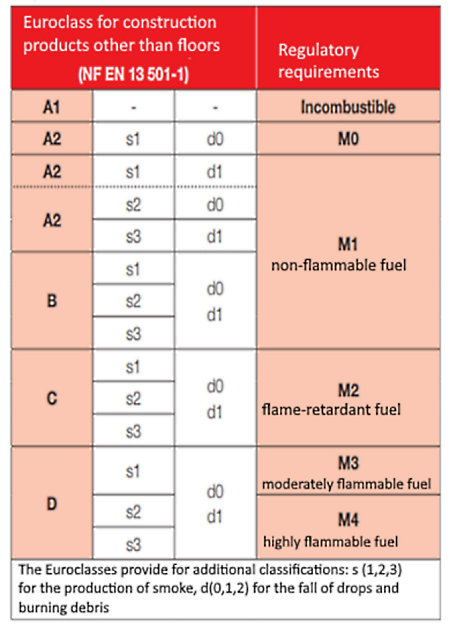Fire protection classification of buildings
Depending on the risks inherent to each type of building (height, number of employees, activity, etc.), the regulations classify the buildings and indicate the fire protection requirements for each type of building.
The regulatory texts are the sole reference documents and must be consulted in their entirety.
- Public buildings (E.R.P.) : order of 25/06/80 amended
- High-rise buildings (I.G.H.) : order of 18/10/77 amended
- Residential buildings: order of 31st January 1986 amended Classified installations ICPE: Law of 19/07/1996 and standard orders for facilities subject to reporting
- Workplace: French Labour Code and order of 05/08/1992 amended
Public buildings (E.R.P.)
E.R.P. are classified in five categories.
Building type depends on the nature of the business. Building categories are based on the numbers of public and staff that frequent them.
- Category 1: over 1500 people
- Category 2: (701 to 1500 people)
- Category 3: (301 to 700 people)
- Category 4: 300 people or less, excluding category 5 buildings
- Category 5: establishments covered by Article R 123-14 in which the number of members of the public does not reach the figure set by the safety regulations for each type of operation
High-rise buildings and skyscrapers (I.G.H. and I.T.G.H.)
An I.G.H. is a building exceeding 50 m in height for residential buildings or more than 28 m in height for other types of buildings.
An I.T.G.H. is a building that exceeds 200 m in height.
Order of 18th January 2012, amended (replacing the order of 18/10/1977) includes general measures common to all classes of I.G.H. buildings and specific provisions for the various classes of buildings.
- GHA : residential buildings
- GHO : hotel buildings
- GHR : education buildings
- GHS : archive deposit buildings
- GHU : health facilities
- GHW1 : office buildings: 28 m PBDN* 50 m
- GHW2 : office buildings: PBDN* > 50 m
- GHZ : buildings of mixed use or containing a public building (E.R.P).
*PBDN : Floor level of top floor

